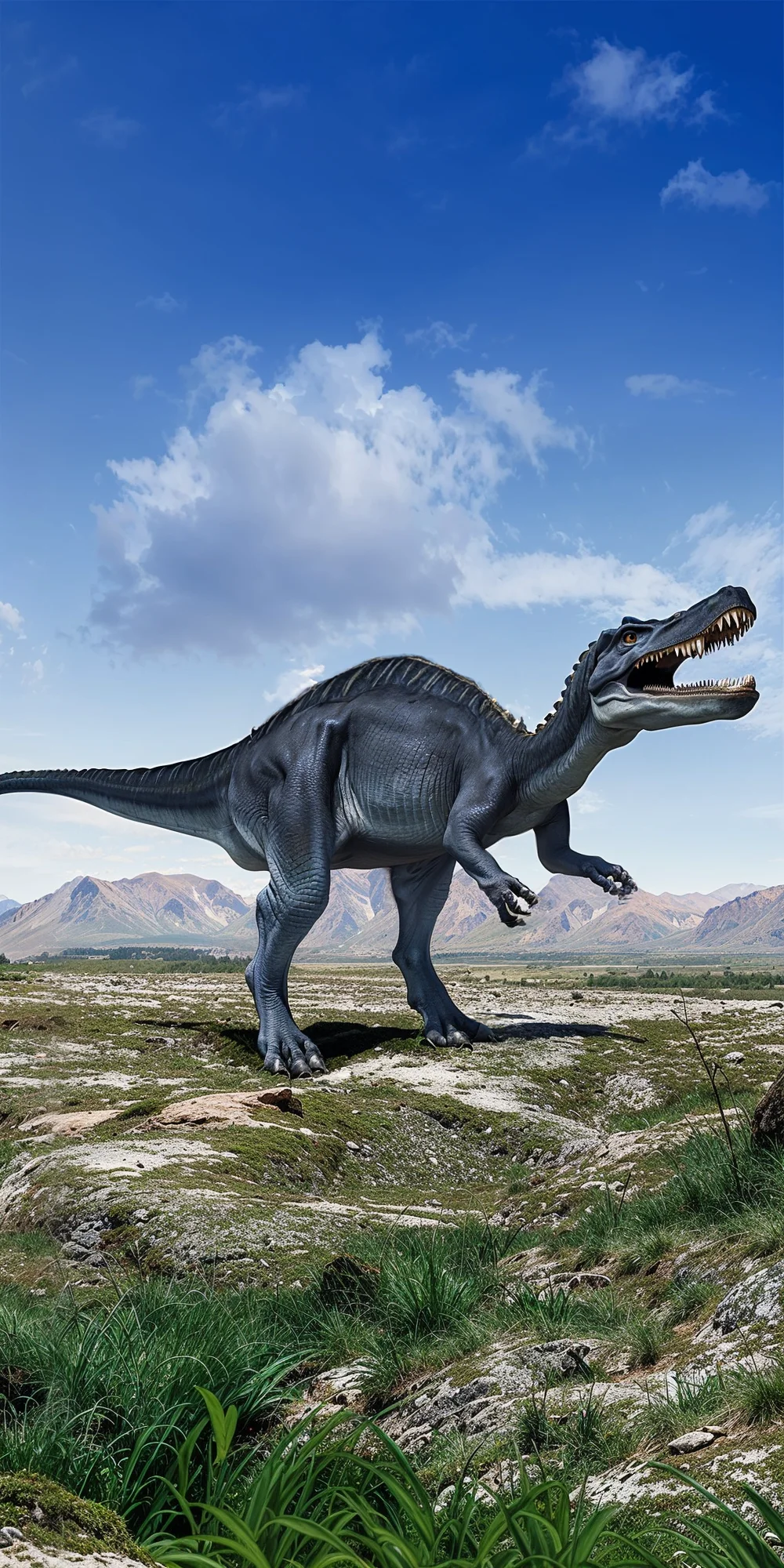The Irritator
The Irritator is a genus of spinosaurid dinosaur that lived during the Early Cretaceous period in what is now Brazil. This carnivorous bipedal animal had a long, slender skull with numerous teeth, including some that were quite large. Its semi-aquatic lifestyle is supported by evidence of fish scales in its stomach region and adaptations for living both on land and in water.

| Irritator | |
|---|---|
| Size | Approximately 25 feet long (7.6 meters) |
| Weight | Around 1,000 pounds (450 kilograms) |
| Speed | 30mph (48km/h) up to 40mph (64km/h) |
| Key Strength | Sharp teeth and powerful hind limbs |
| Biggest Weakness | Lesser agility compared to some other theropods |
| Scientific Name | Irritator challengeri |
| Family | Spinosauridae |
| Habitat | Aquatic and coastal areas |
| Geography | Brazil |
| Diet | Piscivorous (fish-eating) and possibly scavenging |
| Lifespan | 18 years - 20 years |

The Irritator
The Irritator is a genus of spinosaurid dinosaur that lived during the Early Cretaceous period in what is now Brazil. This carnivorous bipedal animal had a long, slender skull with numerous teeth, including some that were quite large. Its semi-aquatic lifestyle is supported by evidence of fish scales in its stomach region and adaptations for living both on land and in water.
Fun Fact: The Irritator was named after the frustration of paleontologists who discovered it, as the holotype specimen had been heavily damaged by illegal fossil hunters, potentially altering the original appearance of the skull.
| Irritator | |
|---|---|
| Size | Approximately 25 feet long (7.6 meters) |
| Weight | Around 1,000 pounds (450 kilograms) |
| Speed | 30mph (48km/h) up to 40mph (64km/h) |
| Key Strength | Sharp teeth and powerful hind limbs |
| Biggest Weakness | Lesser agility compared to some other theropods |
| Scientific Name | Irritator challengeri |
| Family | Spinosauridae |
| Habitat | Aquatic and coastal areas |
| Geography | Brazil |
| Diet | Piscivorous (fish-eating) and possibly scavenging |
| Lifespan | 18 years - 20 years |
Irritator Matchups
We use AI to simulate matchups between the Irritator and other animals. Our simulation considers size, strength, and natural predatory behaviors to determine the most likely outcome.

Can't find the Matchup you want?
Create Your Own MatchupIrritator: Diet, Predators, Aggression, and Defensive Behaviors
What did Irritators eat?
Irritators primarily fed on fish, but they were opportunistic feeders and also consumed small reptiles, amphibians, and insects. Their diet mainly consisted of aquatic prey found in the rivers and lakes where they typically resided.
Did Irritators have any predators?
As juveniles, Irritators were vulnerable to predation by larger carnivorous dinosaurs such as Spinosaurus. However, as they grew larger and more agile, their main predators became other predatory dinosaurs and aquatic predators like crocodiles.
Were Irritators aggressive?
Irritators were not known to be particularly aggressive towards other creatures unless they felt threatened or were competing for food. They were solitary animals and preferred to avoid confrontation whenever possible.
Did Irritators fight?
Irritators may have engaged in territorial disputes with other members of their species, especially during the breeding season. These fights typically involved display behaviors such as vocalizations, posturing, and intimidation rather than physical combat.
How did Irritators defend themselves?
When threatened, Irritators relied on their sharp claws and teeth to defend themselves. They may have used their agility and speed to escape from potential predators, or they may have attempted to intimidate their aggressors through vocalizations and aggressive behaviors.
What was their biggest weakness in a fight?
Despite their sharp teeth and claws, Irritators were relatively small compared to other predatory dinosaurs, making them vulnerable to larger and more powerful predators. In fights with significantly larger dinosaurs, Irritators may have struggled to defend themselves effectively due to their size disadvantage.
Fun Fact: One of the most distinct features of Irritator is the nasal crest that runs along the top of its skull, believed to have been used for display purposes among individuals of the species, potentially for attracting mates or intimidating rivals.
Fun Fact: Studies of the Irritator's braincase have indicated that its brain was relatively large compared to other spinosaurids, suggesting high sensory capabilities for hunting prey or avoiding predators.












